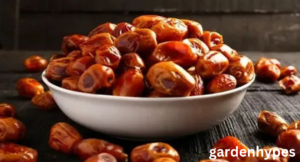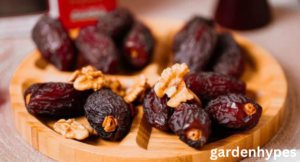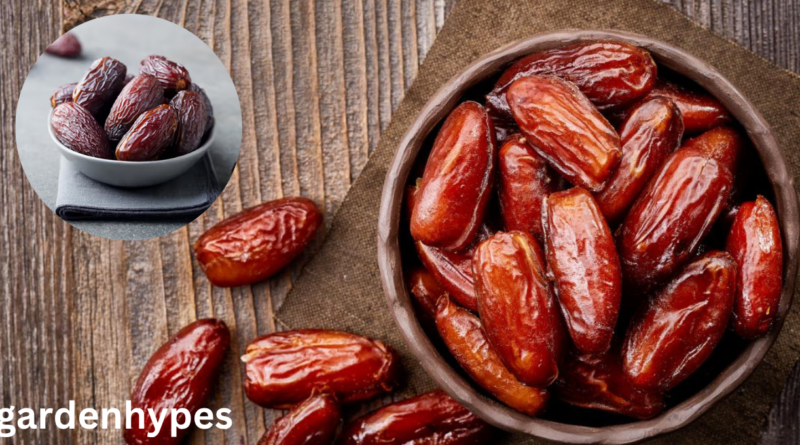Dates Shortage Sparks Concerns Amid Rising Demand and Climate Impacts
Introduction
Why Dates Are Important Globally
Dates shortage have long held a sacred and vital role in various cultures, cuisines, and economies across the world. From the Middle East to North Africa, South Asia to the U.S., dates are more than just a sweet treat—they’re a nutritional powerhouse, a staple food, and even a spiritual symbol. Especially during Ramadan, dates are used by millions to break their fasts each evening, as has been the tradition for centuries. Packed with natural sugars, fiber, vitamins, and essential minerals, dates offer quick energy and several health benefits.
Globally, the demand for dates isn’t just cultural or religious—it’s also economic. Countries like Saudi Arabia, Iran, Iraq, Algeria, and the United Arab Emirates are known for producing some of the world’s highest-quality dates. These are not only consumed domestically but are also heavily exported to countries where local date farming is non-existent or insufficient. With the rise in health-conscious eating and the preference for natural sugars over refined ones, dates have even started to become trendy in Western markets. This growing popularity means that even minor disruptions in supply can send ripple effects across global markets.
click in link cherry shortage
A Glimpse Into the Growing Shortage
Recently, a serious concern has been brewing across the global food industry—a noticeable shortage in the availability of dates. Supermarkets have started reducing their stocks, prices have begun to climb steeply, and many consumers are left wondering why their favorite dried fruit is getting harder to find. Unlike temporary price surges seen during holidays, this shortage is more structural and long-term. It’s the result of a combination of weather extremes, geopolitical tensions, water shortages, pest invasions, and disrupted global supply chains.
And this shortage isn’t just affecting the countries where dates are grown. It’s a global problem now. From farmers in Tunisia struggling with poor harvests to grocery stores in the U.S. rationing their supplies, the signs are all around us. So what exactly is going on?
Understanding Dates as a Commodity
Major Producers of Dates Worldwide
To fully grasp the scale and seriousness of the dates shortage, it’s important to understand where dates come from and how the global market operates. A small group of countries dominates the production landscape, making the supply chain extremely vulnerable to regional disruptions. According to FAO data, the top date-producing nations include:
- Egypt – the world’s largest producer
- Iran – known for high-quality export-grade dates
- Saudi Arabia – combines traditional farming with modern techniques
- Algeria – rich in Medjool and Deglet Noor varieties
- Iraq – historical hub for date cultivation, though output has declined due to instability
- United Arab Emirates – key player in exporting premium dates
Together, these countries contribute to over 75% of the world’s date production. But most of these regions also suffer from political instability, arid climates, and infrastructure issues. This makes the global date supply extremely sensitive to external shocks—whether environmental or economic.
Global Demand Trends Over the Years
Demand for dates has skyrocketed over the past decade. Traditionally consumed in Middle Eastern and North African countries, dates are now enjoying global popularity. Thanks to health trends pushing people toward organic and natural foods, dates have become a go-to snack for athletes, health-conscious eaters, and food bloggers alike. Products like energy bars, smoothies, plant-based desserts, and vegan protein snacks all now include dates as a core ingredient.
What used to be seasonal or religious-based consumption has now turned into a year-round, global demand. This has dramatically increased pressure on date-producing countries to ramp up their output. Unfortunately, the supply chain hasn’t been able to keep pace.
Causes Behind the Dates Shortage
Climate Change and Extreme Weather
One of the leading causes behind the growing dates shortage is climate change. Date palms are hardy, but even they have their limits. These trees thrive in hot, dry climates, but there’s a fine balance between heat that nourishes and heat that destroys. In recent years, key growing regions have faced extended droughts, record-breaking temperatures, and erratic rainfall—all of which have reduced crop yields significantly.
For instance, North African countries like Algeria and Tunisia have experienced hotter-than-usual summers paired with unusually cold winters. This erratic weather pattern severely impacts pollination and fruit development in date palms. Meanwhile, Gulf countries have been grappling with sandstorms and higher salinity in groundwater, which directly harms root systems.
Also, floods in Pakistan and severe drought in Iran have devastated entire date orchards. The problem isn’t isolated—it’s global and interconnected. These extreme weather events are becoming more frequent and intense, pushing the resilience of date palms and the infrastructure that supports their farming to the breaking point.
click in link cherry shortage

Pest Infestations and Crop Diseases
Another quiet but devastating contributor to the shortage is pest infestations. One particular villain? The Red Palm Weevil—a destructive pest that’s become a nightmare for farmers in the Middle East and parts of Asia. Once it infects a palm, it burrows into the tree’s heart and can kill it from the inside out. In many cases, infestations go unnoticed until it’s too late.
Alongside pests, fungal diseases like Bayoud disease (caused by Fusarium oxysporum) have been spreading rapidly due to high humidity and unsustainable farming practices. These diseases wipe out entire plantations, some of which have taken decades to mature. What’s worse is that controlling these outbreaks requires expensive treatments, advanced technology, and training—things many small farmers can’t afford.
Farmers in regions like Basra (Iraq) and southwestern Iran are losing harvest after harvest, with some considering abandoning their farms altogether. If left unchecked, these biological threats could cripple date production permanently in some regions.
Supply Chain and Trade Disruptions
Export Bans and Trade Restrictions
Another factor fueling the dates shortage is the increasing use of export bans and trade restrictions. Faced with lower yields, some countries have opted to prioritize domestic needs over international trade. Take Iran, for instance: due to internal food shortages, the government has intermittently restricted the export of agricultural products—including dates. While this makes sense locally, it hits the global market hard.
Similarly, other nations have introduced bureaucratic hurdles, tariffs, or embargoes on certain trade routes. Political tensions between countries—such as Saudi Arabia and Qatar in past years—have also caused delays and redirection of shipments. When one major exporter closes its gates, the entire global supply chain trembles.
click in link cherry shortage

FAQs
1. Why are dates getting more expensive?
Dates are becoming more expensive due to a combination of factors including reduced harvests caused by climate change, pest infestations, and water scarcity in major date-producing countries. Additionally, global supply chain disruptions, rising transportation costs, and increased global demand are contributing to the price hikes. Export bans from some producing countries have also limited supply, driving up costs on international markets.
2. Which country is most affected by the shortage?
Countries in North Africa and the Middle East, particularly Iraq, Iran, Algeria, and Tunisia, have been significantly impacted by the shortage. These regions are facing the brunt of extreme weather patterns, water scarcity, and pest infestations, which have severely affected their date production. Moreover, political instability in some of these regions has further exacerbated the issue.
3. Are there any health risks from date substitutes?
Most date substitutes—like dried figs, raisins, or prunes—are generally safe and nutritious. However, they do differ in nutritional content. Some may contain added sugars or preservatives, which could affect people with dietary restrictions or health conditions such as diabetes. Always check ingredient labels and opt for organic or unsweetened versions to minimize health risks.
4. Will prices stabilize in the future?
There’s hope that prices could stabilize if sustainable farming methods are adopted, pest infestations are controlled, and geopolitical tensions ease. However, with climate change and water scarcity still looming, it may take years for production to return to previous levels. Unless major investments are made in resilient agriculture and supply chain infrastructure, prices may continue to fluctuate.
